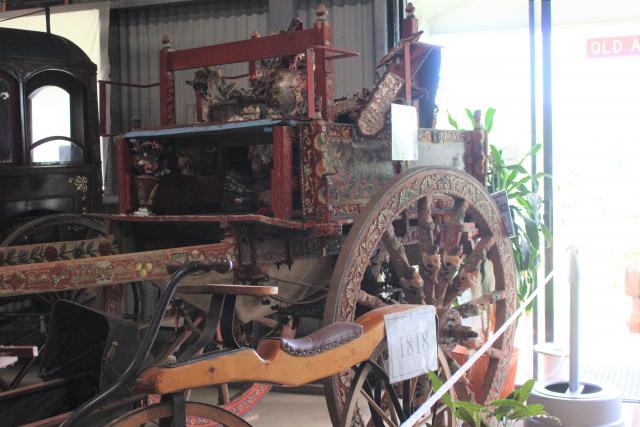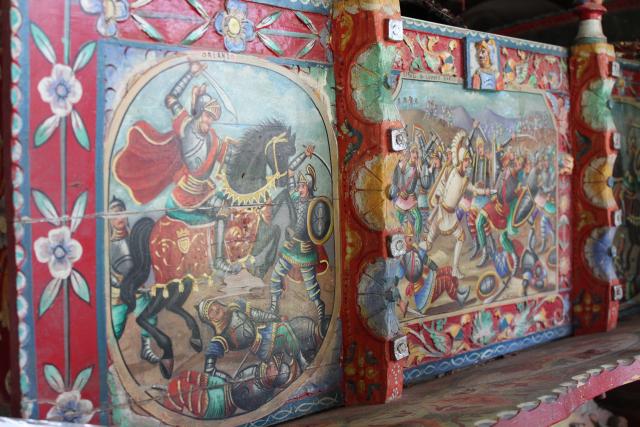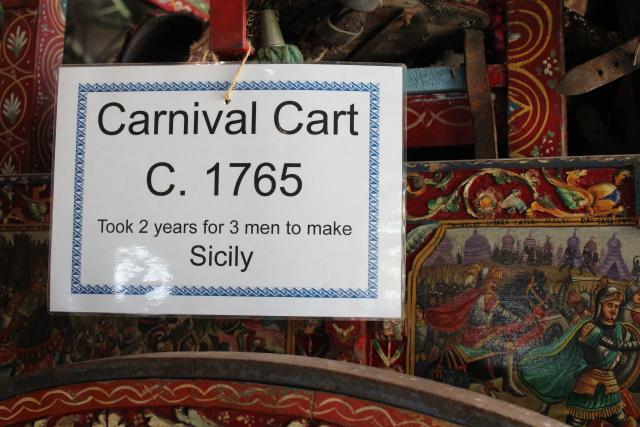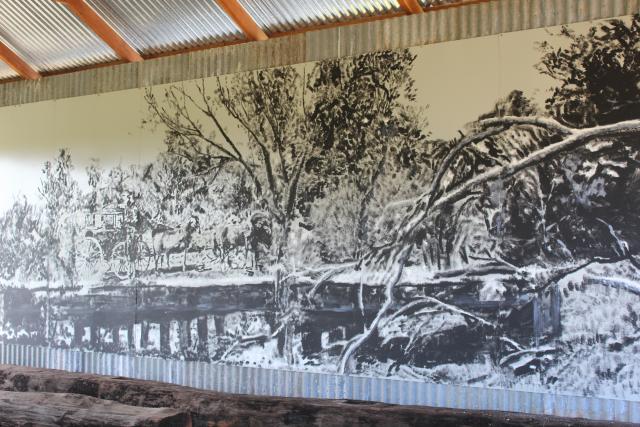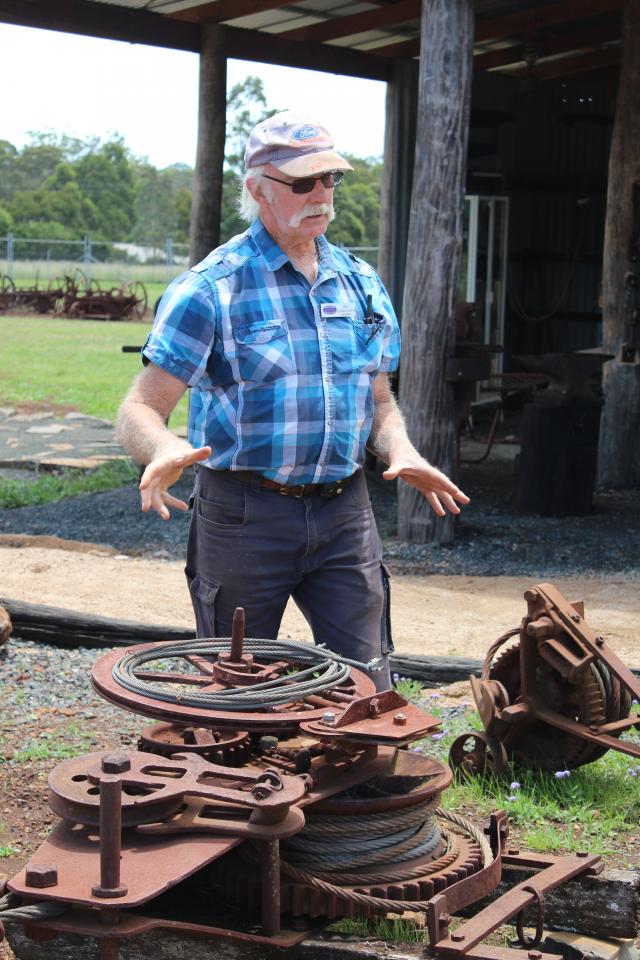By Judy Barnet, Ag Columnist
A visit had been planned to meet up with friends Marnie and Alex at the Highfields Pioneer Village on Saturday. We were to go down Friday after work, stay at the village, then travel home Saturday afternoon. We left as planned and as we headed out of Warwick I said to Richie, “Did you look at the ‘97 LandCruiser I sent you the link for on Facebook?”
We, well I to be more precise, had been wanting to get rid of the Patrol for a while as it was gutless when it came to towing.
“Look at all the bells and whistles it has,” I said to him. Rock Sliders – I didn’t have a clue what they were.
A supercharger – not much idea about that either. An old man emu two inch lift – a bit worried about my short fat legs climbing in here. And the whole car is sprayed in sandy taupe raptor liner – had to look this one up on Google. We could go and have a look tonight, stay in the big smoke and head up to Toowoomba early tomorrow morning? I think he knew that he wouldn’t get any peace until he agreed to sell the Nissan and buy a Toyota, and this LandCruiser at $16K was way less expensive than the later model Sahara I had previously mentioned at the Cheap Car Co.
With a quick call to confirm that an 8pm inspection was amenable to the owner we changed track just past the Eight Mile and headed off to Bahrs Scrub.
On inspection, Richie pronounced the vehicle to be very well maintained so we headed off to find a motel having agreed to take the beast for a test drive at 6.30am the next morning. Getting into the vehicle the next morning did indeed prove a challenge but I did eventually manage a very undignified clamber into the passenger seat.
The supercharger emitted a fair bit of noise on the drive but other than that Richie declared the beast to handle well.
We did stop into the Cheap Car Co. before heading up to Toowoomba where we found the salesman to be arrogant and disinterested, so after a quick look at the Sahara which looked like it had seen a bit of beach work I quickly decided that I would not be buying from such an arrogant individual.
Richie called Matt, the LandCruiser owner, negotiated a price and sealed the deal. We are heading back to the big smoke to pick her up later this week. I did have to promise Richie I would be happy with this vehicle for the foreseeable future though! So if you see a head-turning LandCruiser in Warwick with a short middle-aged lady climbing in by standing on a milk crate you will know who it is.
Back to Toowoomba. We commenced on our tour of the Pioneer Village, warning Marnie and Alex that one day was not long enough to look around. Firstly we checked out the Big Cow, one of my favourite displays, and then gradually worked our way up towards the shearing shed when along the way we spotted Ray Ashford (OAM), the manager (and founder) of the Pioneer Village. Ray kindly offered to show us a project he was working on which was the restoration of a Model T Ford Bus.
Ford did not actually make a bus at this time – commercial chassis were not available in Ford until 1919. Prior to this, if die-hard Ford people wanted a truck they had to buy the Smith Form-a-Truck adaption kit. The Ford promotional brochure advised that a good man and a good apprentice could fit it in a day but I believe this was pretty hard to achieve. The Form-a-Truck kit would have comprised of a heavy axle for the back of the bus and a three speed transmission to go behind the original gearbox, so thus ending up with a six peed truck or bus. The Smith Motor Co in Chicago also made Smith motor cars as well as the form-a attachments for other trucks. In the mid-1920s cars were hard to sell after the war and not many commercial trucks were available before the 1930s so many of the cars were converted to trucks via the Form-A-Truck conversion. The bus Ray has built from little more than a chassis (no wheels or body) will be eventually used to ferry passengers on a tour of the village. It will carry approximately 18 adults or 24-30 children.
Ray also showed us a reconstructed buried bridge more than 150 years old that was originally opposite where the information centre is located in James Street. A team of 20 archaeologists were present when the bridge was dug up and they found an amazing array of stuff including the timber box culvert that directed the water away from the bridge – a very different technique than we use today. When unearthing the bridge another bridge was found beneath it. It was called a corduroy crossing bridge and was built by laying logs across ways, thought to have been from the mid-1850s. When they dug that up they discovered the remains of yet another bridge that was dated to around the 1840s. Old bottles, bricks, shoes are on display dated pre-1860. Fredrick Stein was the builder of the bridge in 1861 and his wife opened it in 1862.
Stein also designed the first town hall in Toowoomba and it was the first purpose-built building in Queensland. The Toowoomba Municipal Council was formed in 1860 and this was one of the first projects they commissioned. They also commissioned two brothers to clear the stumps from Ruthven Street. This took the brothers a whole year so you can imagine how heavily timbered Toowoomba was back then.
As part of the bridge project, every item was numbered and photographed before it could be moved. The bridge was donated to the village by main roads who paid for it to be transported to the pioneer village. They appointed Ray to be the project manager and conducted regular inspections of the restoration work.
Other displays at the Pioneer Village that originate from the Southern Downs include a seed grader donated by my neighbours, Lynton and Belinda Hollit. A working miniature train was recently purchased from a clearing sale at Killarney and also the Upper Forest Springs School. The Gore Railway Station complete with carriages and track also resides at the village.
Regarding Ray, I have never in my life met a man with so much historical knowledge, nor a man that can single-handedly rebuild a historic vehicle from little more than a pile of nuts and bolts, making and engineering most of the parts himself. He is also incredibly humble. I think this is what makes the village, which is run entirely by volunteers, work so well. Everyone is made to feel valued and a part of the family. The work the volunteers do is acknowledged and appreciated. I believe the village to be a world-class attraction. Most of you will know I have been volunteering at the village for around 20 years.
Back at the farm, I am still not happy with the lambs. They just don’t look like they are “doing”. I collected more poo samples yesterday and posted them down to the Paraboss Lab at Armidale. My annual sale is in April so I really need to get them looking good for me to take photos and videos in the next few weeks. I am still struggling with the AI of the cows – no progress there yet. I will have to let them out of the paddock this week as they have eaten it right down, however, this means it will be even harder to detect them on heat and get them inseminated. The plan is to put them in the yards this weekend and apply hot cow patches on their backs – these have a paint bubble that bursts when they are mounted by a bull. I will need the quad bike to be working though if I am to have any chance of finding them, as they need to be checked twice a day.
I am really proud of the calves. They are sleek and shiny and must be putting on at least 1kg per day. They are eating around 4kg of grain per day each They are way too big for the sheep scales so it is all guesswork as to what they weigh now.
I have noticed a large number of dragonflies around lately. Some are a bright and vibrant orange, some more grey, but the ones that have really caught my eye are the gorgeous powder blue ones. They are not just down at the dam, I seem to see them everywhere. I haven’t yet succeeded in getting a good photo of one yet though.
You will be pleased to know I have found a home for some of the ducklings after mentioning them last week, much to CJ’s disappointment as she is quite attached to them. I am dropping them off to a local Stanthorpe lady this weekend and buying a billy goat from her to boot! I am looking forward to having a beautiful Kalahari red buck. Sue crosses her Rangeland goats with Boers and Kalaharis but has a few full-bloods as well. Like me, Sue is taken with the Rangeland’s hardiness and ability to rear their kids without any problems. Unlike mine though, Sue’s goats are all quiet and well behaved. They are a real credit to her.

